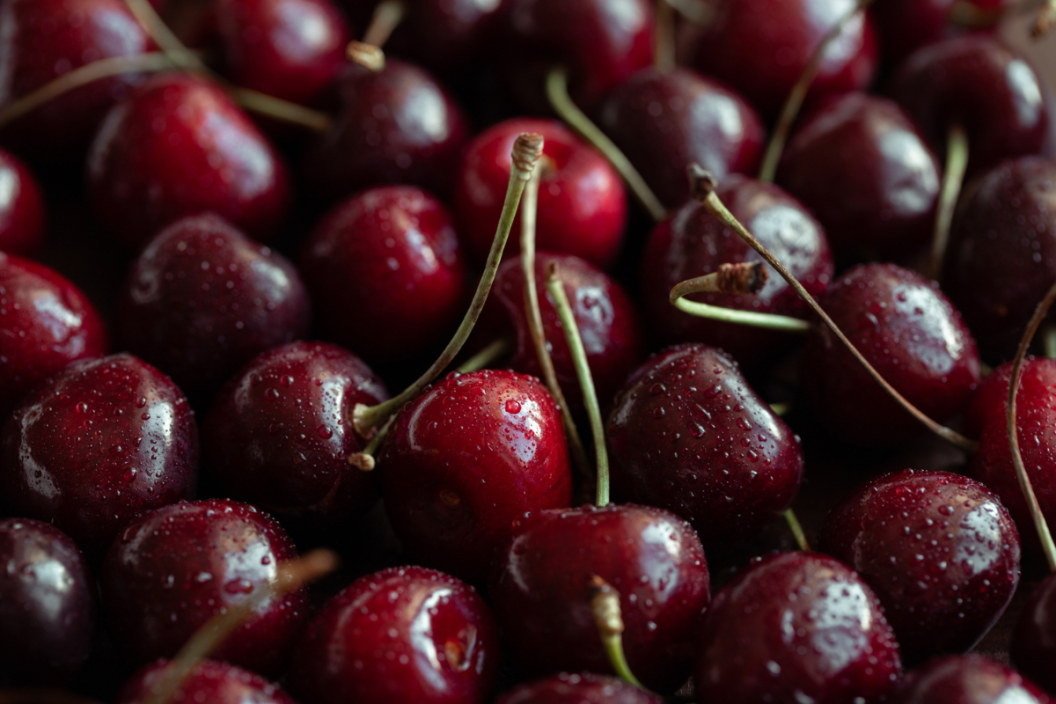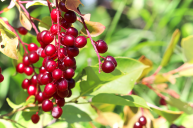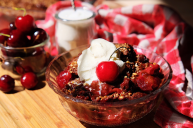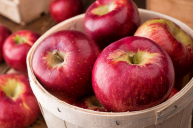Cherries epitomize an indulgence that is wholly vegan, natural, and plant based. Fresh, sun-ripened cherries are unlike any other food: a brittle pop of skin gives way to dense, blood-red flesh that is exquisitely sweet, but not saccharine. There's no guilt after eating one's weight in fresh cherries—just errant pits, stems, and stained fingers.
When Is Cherry Season?
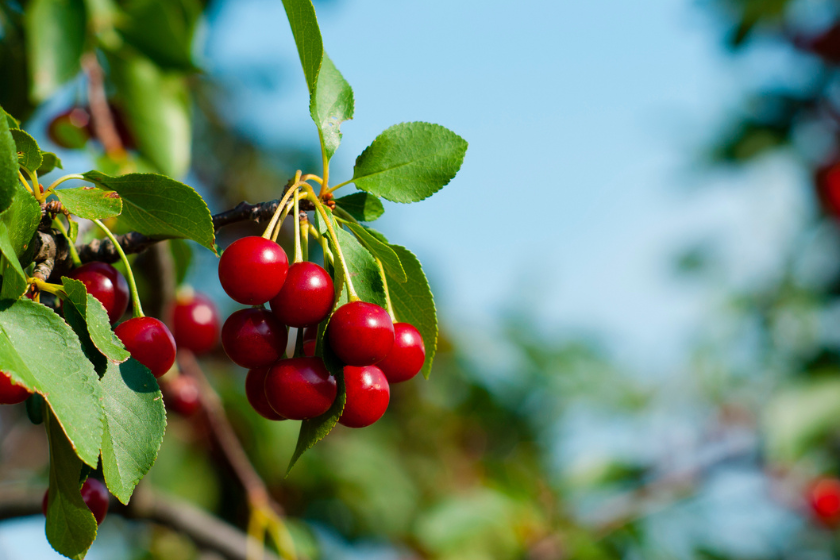
Chukar, a well-known cherry brand, notes that cherries are primarily grown on the west coast of the US and that the harvest season runs from "mid-April to late July." This ephemeral season may be another reason that cherry pricing and ubiquity can range so much. The season can also sometimes extend to late August depending on where the cherry crop is growing. In addition to the west coast, there are also many cherries grown in Michigan and Montana. Some states also boast "U-pick" cherry operations, which is a task most often associated with the autumnal practices of apple and pumpkin picking. Picking your own produce— regardless of what variety— is a super-fun task, a tangible way to connect oneself to the earth and to the bounty of fruits and vegetables that we sometimes take for granted when we nonchalantly grab a container off the shelves at the grocery store.
Cherries are divided into two types: sweet and sour, and there are numerous varieties within those two, such as the popular Bing cherry. Sweet cherries are the kind that are typically plucked fresh and nibbled on, while sour cherry varieties are usually saved for cooking and baking, including the revered cherry pie. Another great use for sour cherries is turning them into black cherries, the iconic ice cream topping or mix-in. Making black cherries is a rather simple process consisting of steeping fresh, pitted cherries in a mixture of sugar, water, and typically a liqueur or cordial. After a quick cook and a cooling process, voila! The black cherries are ready to enjoy.
How To Shop for Cherries
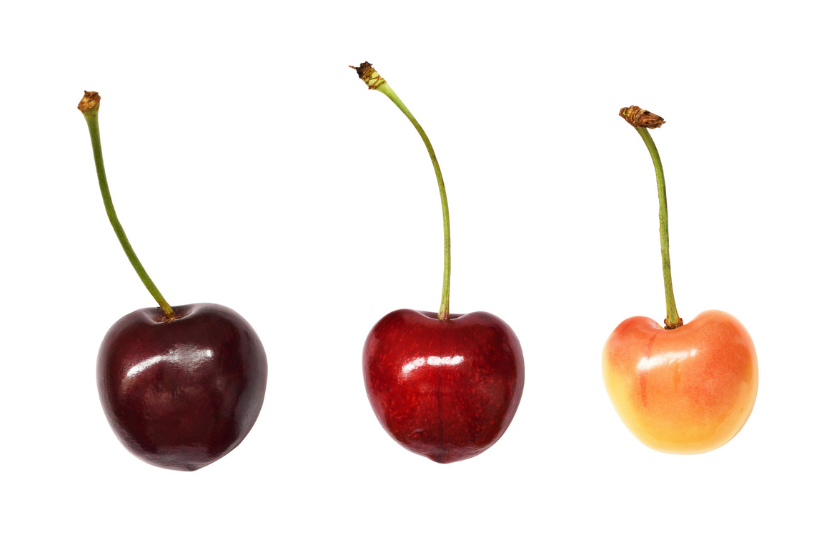
Wondering what to look for when shopping for cherries? Cherries should have bright green stems and taut, shiny skin. You want to avoid cherries that are bruised or wrinkled. Sweet cherries are wonderful to eat fresh and raw. Of course, also be sure to wash them well prior to eating. If serving cherries raw at home, be sure to put out a little dish in which your guests can discard their cherry pits. Be mindful of the fact that Rainier cherries actually 'look' under-ripe, but that's due to their natural color. Generally, sweet cherries should look taut, deep, and dark red, almost crimson.
To store, keep fresh cherries cold. Pitting cherries can be an annoyance, but that's a conversation for another day.
How To Cook With Cherries
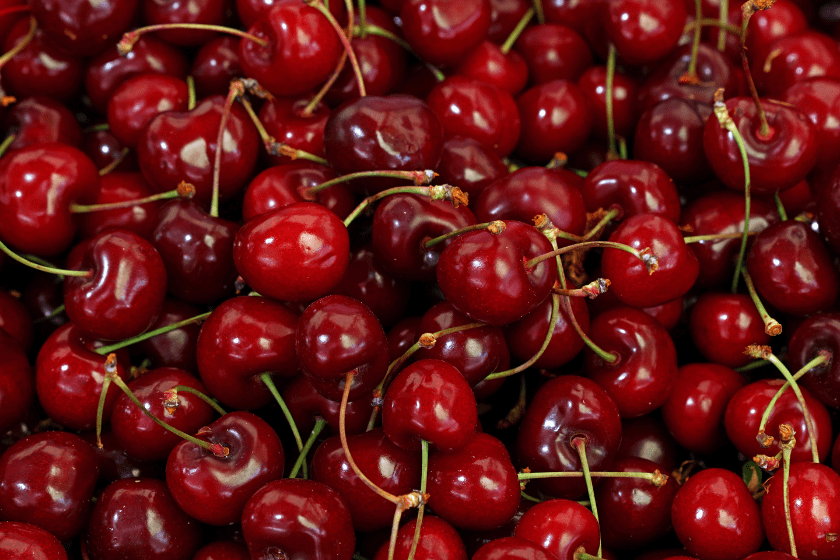
When it comes to their flavor in baked goods, beverages, desserts, and savory dishes, cherry fanatics can be even more emphatic. They're not only fantastic eaten freshly plucked and warm from the sun— cherries are also delicious paired with cheeses, such as a creamy, rich goat cheese, or tossed into salads in both fresh or dried forms. Tart cherry juice is an elixir that boasts health benefit after health benefit. For such a tiny fruit, there's so much flavor packed into each tiny ruby orb. Cherries are a win-win when it comes to nutrition, too. Cherries are a great source of vitamins (such as C, A, and K), minerals, and nutrients, including potassium, magnesium, and calcium.
Unsure how to go about using cherries? The list is nearly endless: jams, jellies, preserves, sauces (savory or sweet), syrups (used over ice cream, in lemonade, etc.), paired with cheese on a charcuterie board, roasted and served on a flatbread slathered in labneh, pie, clafoutis, in homemade ice cream, in a barbecue sauce, with port, on a canape with goat cheese, added to refreshing libations, and more. That's just the beginning.
As noted, there's something bucolic about fresh cherries. It should be stated, though, that the promise of a ripe, pure, fresh cherry belies the fact that its seed is inherently dangerous. Amygdalin, a naturally occurring chemical in cherry pits, can indeed be toxic if one were to consume an inordinate number of cherries; it's actually akin to cyanide, so be super careful when handling cherry pits, and keep stems and pits away from pets.
Maraschino cherries— the ubiquitous apex of the iconic ice cream sundae— are made from sweet cherries. Kate Lebo's The Book of Difficult Fruit notes that maraschino cherries originated "at Oregon State University during Prohibition to garnish virgin cocktails," but their actual origins stem from Croatia, where they were originally made with Marasca cherries. The maraschino cherries that you find in your Shirley Temples or purchase from the store are technically imitation maraschinos, because true maraschinos are made of Marasca cherries and the natural liqueur that is the result of cherry pits, sugar, and lots of time. So in this instance— just as Ina would say— store-bought is just fine.
In her book, Kate Lebo surmises the essence of a cherry as such:
"...summer glow and fair warning, true cherry and almost almond, the promise and poison from deep in their seeds."
For those also enamored of the small, oft-underappreciated fruit, this poetic description hits the nail on the head.
READ: Forage and Identify Chokecherry, A Native North American Berry
Products featured on Wide Open Eats are independently selected by our editors. However, when you buy something through our links, we may earn a commission.
